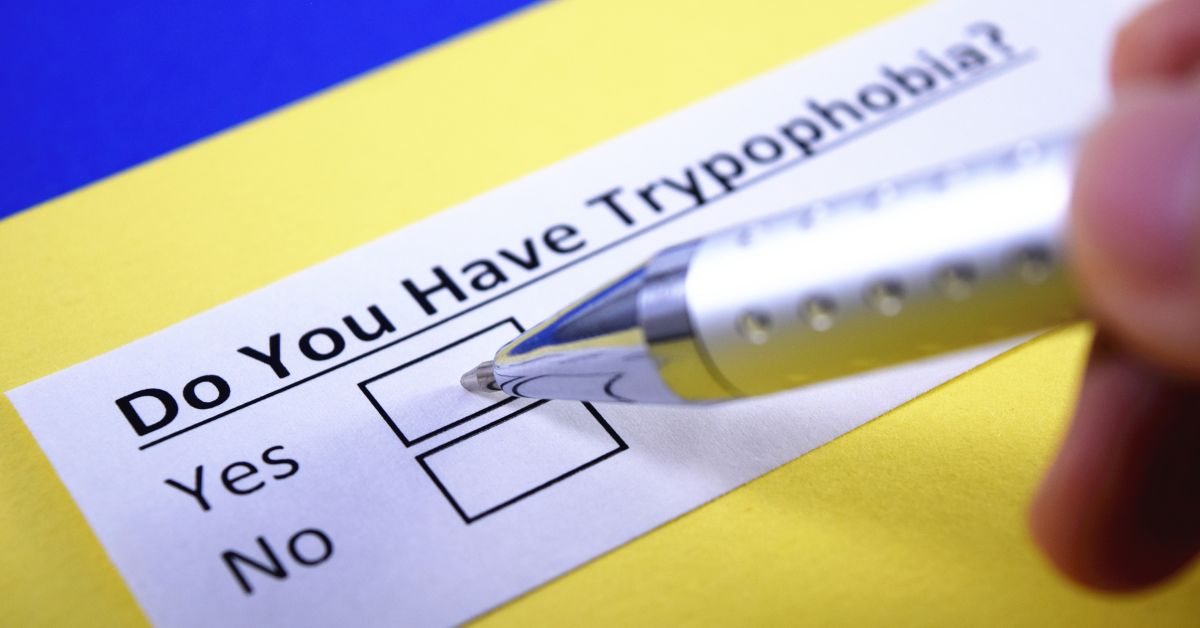

When a person experiences a strong physical and emotional reaction such as fear and disgust to any pattern with numerous holes it can indicate trypophobia. Honeycomb, sea sponge, and soap bubbles are some of the triggers of trypophobia. It is said that the bigger the cluster of holes, the more uncomfortable people are. Majority of people do not have a genuine fear of holes. Exposure treatment may be able to help you overcome your aversion to patterns of holes.
This blog is a comprehensive guide to understanding trypophobia, its triggers, causes, symptoms, diagnoses, and treatment options.
Trypophobia is an aversion or repulsion to things with repeated patterns or clusters of holes, such as honeycombs and sponges. The pattern of holes disgusts people with trypophobia. They are not always afraid of holes.
The word ‘trypophobia’ is coined from the Greek words, ‘trypta’ meaning holes and ‘phobos’ which means fear..
Trypophobia symptoms resemble those of a panic attack. A person may experience the following:
Trypophobia sufferers may experience these feelings multiple times a week or even every day. The fear of holes can sometimes last a lifetime.
Experts are unsure as to why certain people experience trypophobia. The brain may link clusters of holes with danger, according to one idea. A pattern of little holes, for example, may be associated with the skin of a venomous snake or the eyes of a tarantula. Alternatively, the holes can also remind the person with trypophobia of skin problems or rashes. Another theory is that processing patterns with holes requires more energy and oxygen, resulting in distress. It’s also possible that it’s a symptom of obsessive-compulsive disorder (OCD).
If certain symptoms like a rapid heartbeat, sweating and nausea persist, it is recommended to visit a doctor immediately.
Women are more likely than men to experience trypophobia. It’s also a trait that runs in families. According to one study, roughly 25% of patients with trypophobia with a family history of this disorder.
Some people who are repulsed of hole patterns also suffer from other mental illnesses, including:
The American Psychiatric Association (APA) does not classify trypophobia as an illness (DSM). This can be because the illness is often painful but not incapacitating. There are no clear diagnostic criteria for it because it isn’t recognized as a disorder. There is, however, an online trypophobia test. An individual can find out if they are suffering from this phobia with the online trypophobia test.
The trypophobia test consists of the following steps:
If trypophobia makes it difficult for a person to participate in some activities or enjoy life, exposure therapy may help. This treatment gradually exposes the patient to trypophobia triggers while assisting them in controlling their reactions. As many as nine out of ten people can overcome phobias with this sort of psychotherapy.
A healthcare provider can also complete the following during exposure therapy:
Cognitive-behavioural treatment (CBT) is another option. This therapy aids in the modification of perceptions and reactions to situations that cause trypophobia. Anti-anxiety drugs aren’t usually effective for those suffering from certain phobias. However, a healthcare provider may give anti-anxiety medication for short-term relief if the patient is aware of the triggers that can cause a reaction.
When a patient suffering from acute trypophobia symptoms, using breathing and relaxation techniques helps in minimizing the duration, frequency, and intensity of the symptoms. Deep breathing, for example, helps in controlling the heart rate causing the body to relax, reducing anxiety, and minimizing the feeling of dread.
Here’s how one can practice deep breathing:
Trypophobia is the dislike or fear of a hole pattern. Revulsion can be triggered by seeing clusters of holes in foods, flowers, and items like sponges. Trypophobia is becoming more well recognized as an anxiety disorder that can harm one’s quality of life. If a patient suspects of suffering from trypophobia, talk to a doctor immediately. If necessary, a healthcare provider can refer to a mental health specialist who can help the patient overcome this problem with exposure treatment.
The following are the triggers of trypophobia:
Doctors may recommend relaxation techniques such as meditation, mindfulness, or visualizing soothing images to help avoid the symptoms of trypophobia.
Trypophobia is not fatal but can hinder an individual’s daily activities if not managed. If a person is presenting symptoms of this disorder it is advisable to seek medical advice at the earliest.
At Apollo, we believe that easily accessible, reliable health information can make managing health conditions an empowering experience. Apollo Hospitals Online Health Library team consists of medical experts who create curated peer-reviewed medical content that is regularly updated and is easy-to-understand.

October 25, 2024